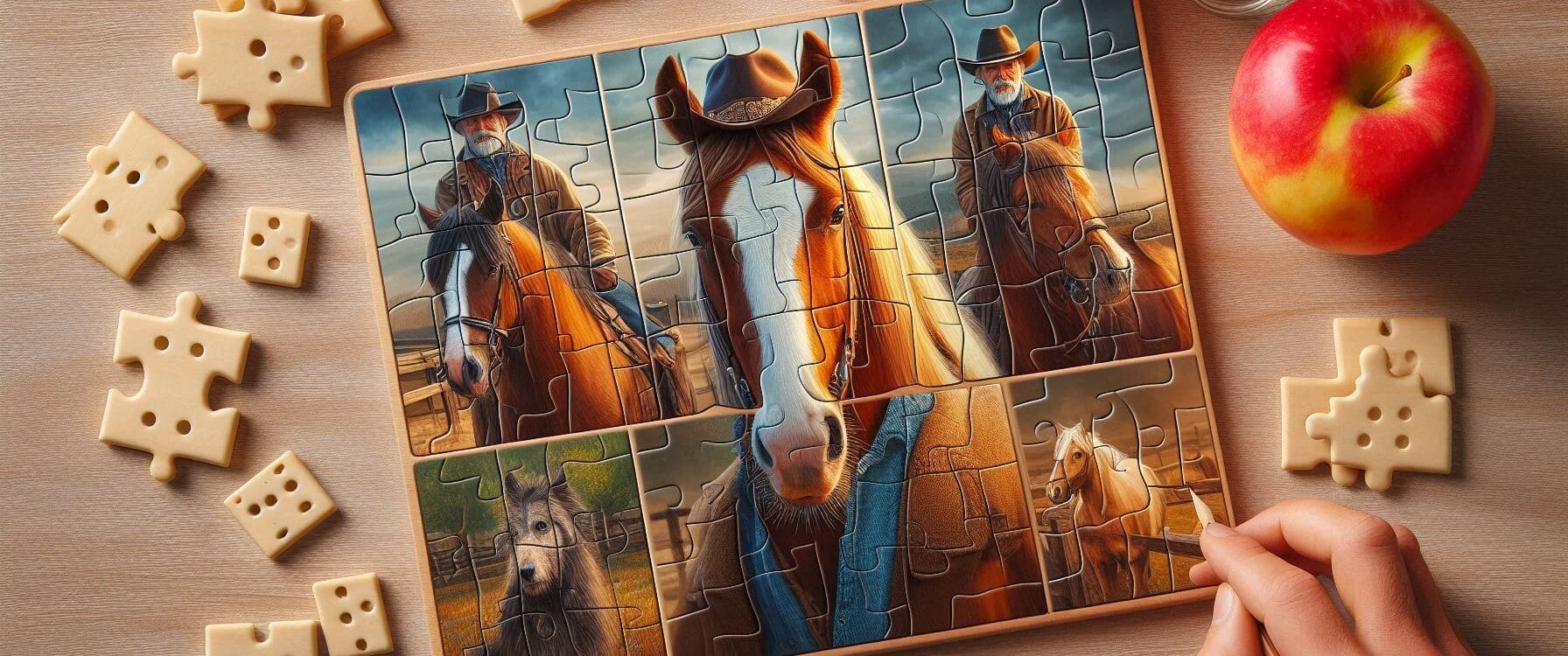Top Takeaways and Key Concepts
Break big information into small related chunks to make it easier to remember and organize.
Create patterns and groups to help your brain store and recall information faster.
Use chunking for complex tasks by dividing large goals into step-by-step pieces.
Organize mental “files” visually or by category to boost memory and understanding.
Apply chunking daily to improve focus, productivity, and learning efficiency.
Summary of This Article
Please Note: This post may contain affiliate links. If you click one of them, we may receive a commission at no extra cost to you. As an Amazon Associate, I earn from qualifying purchases.
This article explains chunking, a powerful memory strategy that involves breaking large amounts of information into smaller, meaningful groups. Chunking works because the brain naturally looks for patterns and organized structures, making grouped information easier to store and recall. The article shows how chunking is used in everyday life—from memorizing phone numbers and grocery lists to studying and learning new skills. It also highlights how chunking improves focus and productivity by simplifying complex tasks. With consistent practice, chunking can transform how you learn, remember, and manage information in both personal and professional life.
Video Summary
What is Chunking and How Can It Help You Remember More?
Let’s talk about chunking. No, not the kind where you eat a whole bag of chips and feel like a “chunk” afterward (though, let’s be honest, we’ve all been there). I’m talking about a mental trick that can help you remember more by simply making things simpler. And, as it turns out, this little trick isn’t just for memory champions or superhuman thinkers—it’s something we can all use to turbocharge our brainpower.
Here’s how it works: chunking is the process of taking a large amount of information and breaking it down into smaller, more manageable parts—also known as chunks. Imagine trying to memorize a 10-digit phone number. Most people would break it up into groups of three or four numbers (like “555-867-5309”), which makes it easier to remember. Your brain, by the way, loves this because it doesn’t have to store long strings of random data; it can instead remember a few chunks that carry more meaning. Simple, right?
The Power of Patterns in Chunking Information
Now, let’s get a little deeper into why chunking works. It’s all about patterns. Our brains are designed to recognize patterns, and the more we group information into recognizable patterns, the easier it is for our brain to store and retrieve that information. Ever notice how you can remember a song’s lyrics after hearing it only a few times? That’s because the song is a “chunk” of familiar patterns—verse, chorus, verse—that your brain can easily absorb.
Think about how phone numbers are broken into segments. That’s no accident. If you look at the digits as a long string—like “1234567890”—it’s much harder to remember. But break it into three chunks, and suddenly, it’s no longer a random string of numbers, it’s something much more manageable. The same applies to pretty much anything you’re trying to remember, whether it’s shopping lists, historical dates, or even people’s names. The more we create patterns in our minds, the more space we free up for new information.
Chunking in Everyday Life
You’ve probably been chunking information your whole life without even realizing it. Think about when you go grocery shopping. You might make a mental list and categorize items into chunks: fruits, vegetables, dairy, snacks. This is your brain organizing information into neat little piles that are easier to recall later on. The beauty of chunking is that it can be applied to almost any situation.
Take studying for a test, for instance. Instead of cramming a bunch of unrelated facts into your brain, group related concepts together. You’re studying biology? Chunk it into categories like cells, ecosystems, genetics, etc. When you do this, your brain can more easily retrieve the information because it’s already connected in a meaningful way. By the way, chunking doesn’t just make memorizing easier; it also helps with understanding, because you’re organizing ideas logically in your mind.
Using Chunking for Complex Information
It’s easy to chunk things like phone numbers or grocery lists, but what about more complex information—like learning a new language or tackling a work project that involves a million little details? Here’s the secret: break it down. Instead of viewing the project or task as a giant mountain, visualize it as a series of smaller, bite-sized pieces that are easier to manage. Each chunk might represent a sub-task or step in a larger process.
If you’re learning a new language, break it down into categories like nouns, verbs, adjectives, and so on. Focus on one chunk at a time, and before you know it, you’ll have a solid foundation of vocabulary and grammar that you can build on. The same approach works for any large project, whether it’s a creative endeavor, a work task, or a personal goal. All things considered, chunking is a method that works not only for remembering but for mastering complex skills as well.
The Mental “File Cabinet”: Organizing Your Thoughts
Imagine that your brain is like a giant filing cabinet. When you don’t chunk information, things get cluttered. You might be flipping through pages, trying to find the one piece of information you need, but everything’s mixed together and it’s impossible to find what you’re looking for.
Chunking is like putting those pages into neat folders. Each folder holds related information, and when you need something specific, you can find it quickly. This is why chunking is so powerful—it helps you organize and simplify information, making it easier to retrieve when needed. And honestly, who doesn’t want a more organized brain? It’s like having a tidy office instead of a chaotic one, except the office is inside your head. Speaking of which, try applying chunking to organize your thoughts during a busy day. You’ll be amazed at how much smoother things go.
How to Chunk Information Like a Pro
Okay, so now you’re probably thinking, “Great, but how do I actually chunk information?” Well, I’ve got you covered. Start by identifying the larger piece of information you’re trying to remember. Maybe it’s a long list of facts, a bunch of tasks, or even just a long-winded conversation you had. Next, break that information into groups that make sense. For example, if you’re memorizing historical events, group them by themes—wars, revolutions, political movements.
Once you’ve got your chunks, try to visualize each one. Creating mental images helps cement those chunks in your memory. You could also associate each chunk with a keyword, or a simple mnemonic (like ROYGBIV for the colors of the rainbow) to help trigger your memory when you need it. As a matter of fact, the more you practice, the more second nature it’ll feel.
Chunking for Better Focus and Productivity
Here’s another pro-tip: chunking isn’t just for remembering. It can actually help with your focus and productivity. If you have a lot of tasks on your to-do list, try chunking them into categories: work, personal, errands, and so on. Then focus on one chunk at a time. This is way less overwhelming than staring at the whole list at once.
When you focus on one chunk, your brain is less likely to get distracted by unrelated tasks. Let’s see…if you start your morning by knocking out a few “work” tasks, you’ll feel more accomplished and motivated to tackle the next chunk—maybe your personal stuff. By breaking up your day like this, you’ll stay on task and avoid the dreaded “what was I doing again?” moment.
Using Technology to Help with Chunking
Interestingly enough, chunking can also be enhanced with the help of technology. There are apps that let you create lists, organize your thoughts, and even study with flashcards that break things into manageable chunks. And hey, you don’t have to reinvent the wheel here—plenty of apps and tools are designed specifically to help with memory, focus, and productivity. Why not take advantage of them?
There are even brain-training apps that can help you improve your chunking skills by giving you exercises designed to work on your memory and focus. It’s like having a personal trainer for your brain. All things considered, technology isn’t just about entertainment—it’s a handy tool for improving cognitive function too.
Suggested External Resources:
How to Use Chunking to Remember More
https://www.psychologytoday.com/how-to-use-chunking-memory
Memory Techniques: How Chunking Helps Us Retain Information
https://www.mindtools.com/memory-techniques-chunking
How to Improve Your Memory Through Chunking
https://www.huffpost.com/how-to-improve-your-memory-chunking
Frequently Asked Questions
What is chunking in memory?
Chunking is the process of breaking large information into small, meaningful groups to make it easier for the brain to store and recall.
Why does chunking help improve memory?
Chunking works because the brain naturally searches for patterns, and organized information is easier for the brain to process and retrieve later.
How can chunking be used for studying?
Chunking helps by grouping related concepts into categories, making the information easier to understand and recall during exams or review.
Can chunking help with productivity?
Yes, chunking tasks into smaller steps reduces overwhelm and allows you to focus on one category at a time to boost efficiency.
Does chunking work for complex skills?
Chunking can be used to divide complex skills or learning projects into manageable parts, making progress easier to track and achieve.
How can chunking be applied in daily life?
People often chunk grocery lists, tasks, or phone numbers without realizing it, making everyday recall faster and more natural.
Can digital tools support chunking?
Yes, apps like lists, flashcards, and digital organizers help categorize and store information into chunks for easier learning.

Kevin Collier is an enthusiastic advocate for brain health and cognitive enhancement, passionately exploring topics such as memory improvement, visualization techniques, and mental wellness. With a background in psychology and personal development, he distills complex concepts into actionable insights that empower readers to unlock their full cognitive potential. At MaxMyMind.com, Kevin shares evidence-based strategies and tips to help individuals improve their mental clarity, enhance memory, and cultivate a healthier mind. His mission is to inspire others to prioritize their cognitive health and embrace lifelong learning.





